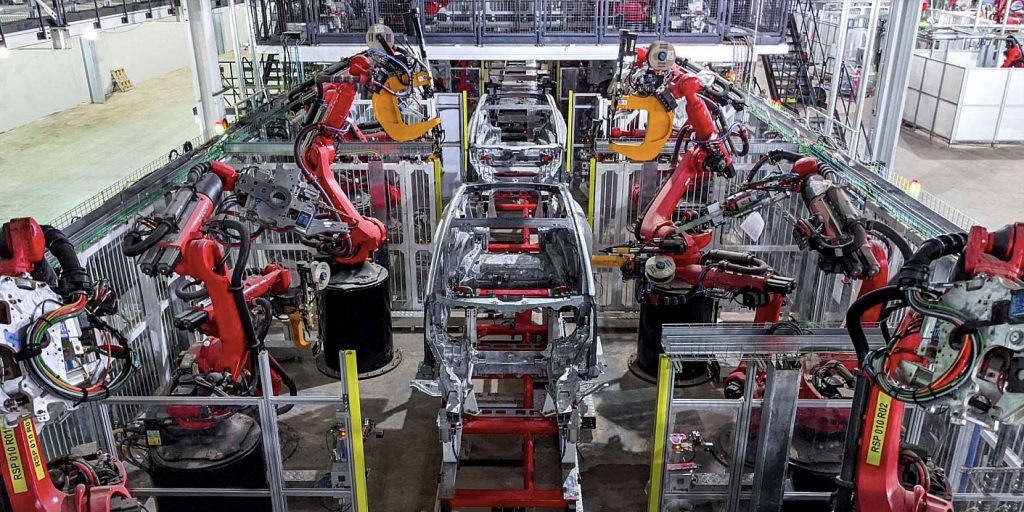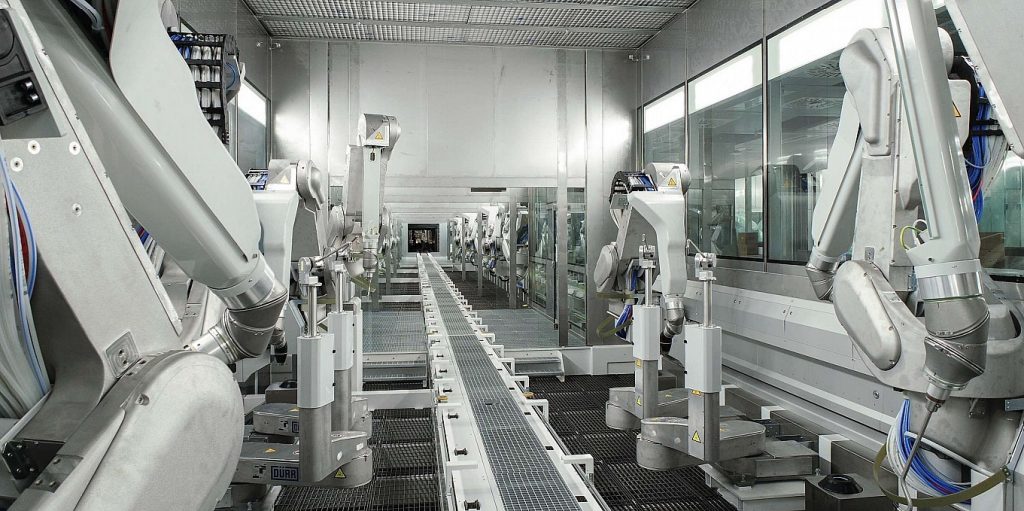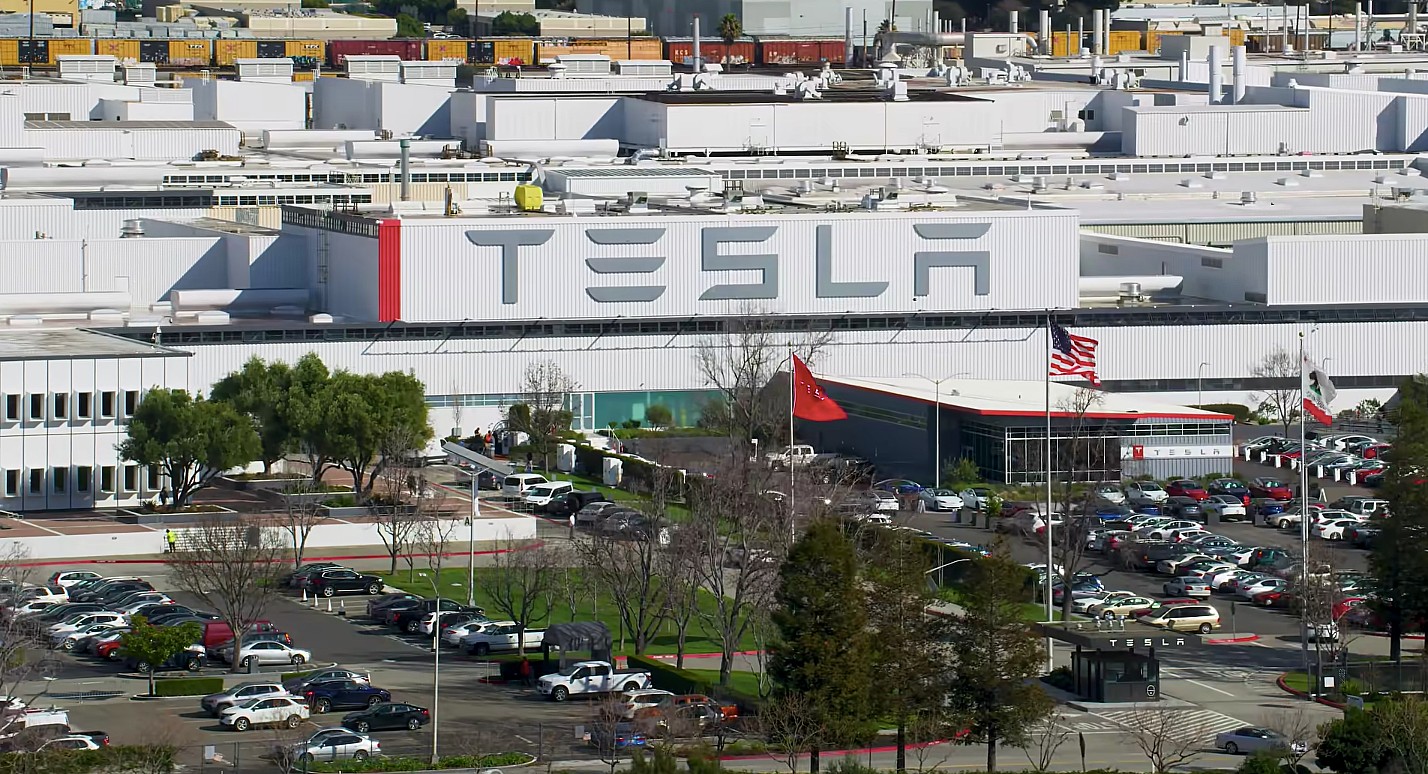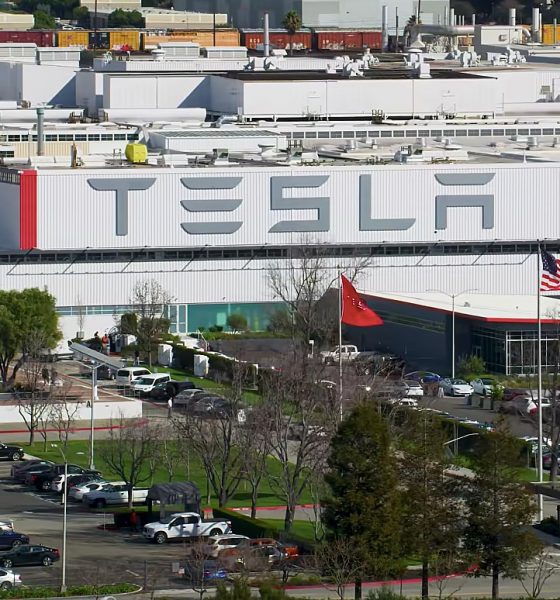Tesla’s (NASDAQ:TSLA) second-quarter for 2021 saw the electric car maker post $11.958 billion in revenue. The results, which were discussed in the Q2 2021 Update Letter, were released after the closing bell on Monday, July 26.
Tesla’s second-quarter was impressive, with the electric car maker producing a total of 206,421 vehicles, an astounding number considering that Q2 was beset by a number of headwinds. The company also delivered 201,250 vehicles comprised of 199,360 Model 3 and Model Y, as well as 1,890 Model S.
Tesla’s strong Q2 results were due in part to the Model Y’s accelerating ramp in the United States and the all-electric crossover’s momentum in China. Tesla also finally started deliveries of the new Model S Plaid and Model S Long Range, which are high-margin vehicles.

The following are the key points in Tesla’s Q2 2021 Update Letter.
Revenue
Tesla beat expectations in Q2 2021, reporting a revenue of $11.958 billion for the second quarter, representing total revenue growth of 98% year-over-year. In comparison, Wall Street expected Tesla’s Q2 2021 revenue to be at $11.299 billion, with the highest estimates pointing to revenue of $12.827 billion and the lowest estimates pointing to $9.5 billion of revenue.
Earnings
Tesla also beat expectations for earnings, with the company posting earnings per share of $1.45 in the first quarter. Wall Street, on the other hand, expected Tesla to report a gain of $0.98 per share.
Profitability
Tesla posted a GAAP operating income of $1.3 billion in the second quarter, with an 11.0% operating margin in Q2 2021. The company also posted $1.1 billion of GAAP net income and $1.6 billion of non-GAAP net income. GAAP automotive gross margin also stood at an impressive 28.4%. This was the first time that Tesla exceeded $1 billion of GAAP net income in its history.
Cash
Tesla had an operating cash flow less CapEx (free cash flow) of $619 million in the second quarter. The company also saw a decrease of $912 million in its cash and cash equivalents, resulting in its war chest now standing at $16.2 billion as of Q2 2021.

Gigafactories
Tesla has provided some updates on the company’s multiple Gigafactories that are under construction. According to Tesla, commissioning has already started in some areas of Gigafactory Texas. Gigafactory Shanghai has completed its transition as Tesla’s primary vehicle export hub as well. Over in Europe, Tesla is focusing on growing import volumes to the region as Giga Berlin continues its equipment tests.
4680 Cells
Tesla’s Q2 2021 Update has provided a number of key updates about the development of the company’s 4680 cells. For one, the company has successfully validated performance and lifetime of its 4680 cells. Manufacturing validation of the 4680 cell production lines at the Kato Road facility are nearing their end as well. Last but not least, internal crash tests of 4680 structural battery packs have so far been successful.
Tesla Energy
Tesla Energy hit its stride in the second quarter, with battery storage deployments tripling in Q2 2021. This increase was primarily due to several Megapack projects. The company noted, however, that while Powerwall demand is exceptional, supply chain challenges have kept the home battery system backlogged. As for the Solar Roof, deployments reached 85 MW in the second quarter, more than tripling year-over-year.
Tesla’s Q2 2021 Update Letter could be accessed below.
Tesla q2 2021 Results by Simon Alvarez on Scribd
Don’t hesitate to contact us with news tips. Just send a message to tips@teslarati.com to give us a heads up.

Investor's Corner
Tesla stock closes at all-time high on heels of Robotaxi progress

Tesla stock (NASDAQ: TSLA) closed at an all-time high on Tuesday, jumping over 3 percent during the day and finishing at $489.88.
The price beats the previous record close, which was $479.86.
Shares have had a crazy year, dipping more than 40 percent from the start of the year. The stock then started to recover once again around late April, when its price started to climb back up from the low $200 level.
This week, Tesla started to climb toward its highest levels ever, as it was revealed on Sunday that the company was testing driverless Robotaxis in Austin. The spike in value pushed the company’s valuation to $1.63 trillion.
Tesla Robotaxi goes driverless as Musk confirms Safety Monitor removal testing
It is the seventh-most valuable company on the market currently, trailing Nvidia, Apple, Alphabet (Google), Microsoft, Amazon, and Meta.
Shares closed up $14.57 today, up over 3 percent.
The stock has gone through a lot this year, as previously mentioned. Shares tumbled in Q1 due to CEO Elon Musk’s involvement with the Department of Government Efficiency (DOGE), which pulled his attention away from his companies and left a major overhang on their valuations.
However, things started to rebound halfway through the year, and as the government started to phase out the $7,500 tax credit, demand spiked as consumers tried to take advantage of it.
Q3 deliveries were the highest in company history, and Tesla responded to the loss of the tax credit with the launch of the Model 3 and Model Y Standard.
Additionally, analysts have announced high expectations this week for the company on Wall Street as Robotaxi continues to be the focus. With autonomy within Tesla’s sights, things are moving in the direction of Robotaxi being a major catalyst for growth on the Street in the coming year.
Elon Musk
Tesla needs to come through on this one Robotaxi metric, analyst says
“We think the key focus from here will be how fast Tesla can scale driverless operations (including if Tesla’s approach to software/hardware allows it to scale significantly faster than competitors, as the company has argued), and on profitability.”

Tesla needs to come through on this one Robotaxi metric, Mark Delaney of Goldman Sachs says.
Tesla is in the process of rolling out its Robotaxi platform to areas outside of Austin and the California Bay Area. It has plans to launch in five additional cities, including Houston, Dallas, Miami, Las Vegas, and Phoenix.
However, the company’s expansion is not what the focus needs to be, according to Delaney. It’s the speed of deployment.
The analyst said:
“We think the key focus from here will be how fast Tesla can scale driverless operations (including if Tesla’s approach to software/hardware allows it to scale significantly faster than competitors, as the company has argued), and on profitability.”
Profitability will come as the Robotaxi fleet expands. Making that money will be dependent on when Tesla can initiate rides in more areas, giving more customers access to the program.
There are some additional things that the company needs to make happen ahead of the major Robotaxi expansion, one of those things is launching driverless rides in Austin, the first city in which it launched the program.
This week, Tesla started testing driverless Robotaxi rides in Austin, as two different Model Y units were spotted with no occupants, a huge step in the company’s plans for the ride-sharing platform.
Tesla Robotaxi goes driverless as Musk confirms Safety Monitor removal testing
CEO Elon Musk has been hoping to remove Safety Monitors from Robotaxis in Austin for several months, first mentioning the plan to have them out by the end of 2025 in September. He confirmed on Sunday that Tesla had officially removed vehicle occupants and started testing truly unsupervised rides.
Although Safety Monitors in Austin have been sitting in the passenger’s seat, they have still had the ability to override things in case of an emergency. After all, the ultimate goal was safety and avoiding any accidents or injuries.
Goldman Sachs reiterated its ‘Neutral’ rating and its $400 price target. Delaney said, “Tesla is making progress with its autonomous technology,” and recent developments make it evident that this is true.
Investor's Corner
Tesla gets bold Robotaxi prediction from Wall Street firm
Last week, Andrew Percoco took over Tesla analysis for Morgan Stanley from Adam Jonas, who covered the stock for years. Percoco seems to be less optimistic and bullish on Tesla shares, while still being fair and balanced in his analysis.

Tesla (NASDAQ: TSLA) received a bold Robotaxi prediction from Morgan Stanley, which anticipates a dramatic increase in the size of the company’s autonomous ride-hailing suite in the coming years.
Last week, Andrew Percoco took over Tesla analysis for Morgan Stanley from Adam Jonas, who covered the stock for years. Percoco seems to be less optimistic and bullish on Tesla shares, while still being fair and balanced in his analysis.
Percoco dug into the Robotaxi fleet and its expansion in the coming years in his latest note, released on Tuesday. The firm expects Tesla to increase the Robotaxi fleet size to 1,000 vehicles in 2026. However, that’s small-scale compared to what they expect from Tesla in a decade.
Tesla expands Robotaxi app access once again, this time on a global scale
By 2035, Morgan Stanley believes there will be one million Robotaxis on the road across multiple cities, a major jump and a considerable fleet size. We assume this means the fleet of vehicles Tesla will operate internally, and not including passenger-owned vehicles that could be added through software updates.
He also listed three specific catalysts that investors should pay attention to, as these will represent the company being on track to achieve its Robotaxi dreams:
- Opening Robotaxi to the public without a Safety Monitor. Timing is unclear, but it appears that Tesla is getting closer by the day.
- Improvement in safety metrics without the Safety Monitor. Tesla’s ability to improve its safety metrics as it scales miles driven without the Safety Monitor is imperative as it looks to scale in new states and cities in 2026.
- Cybercab start of production, targeted for April 2026. Tesla’s Cybercab is a purpose-built vehicle (no steering wheel or pedals, only two seats) that is expected to be produced through its state-of-the-art unboxed manufacturing process, offering further cost reductions and thus accelerating adoption over time.
Robotaxi stands to be one of Tesla’s most significant revenue contributors, especially as the company plans to continue expanding its ride-hailing service across the world in the coming years.
Its current deployment strategy is controlled and conservative to avoid any drastic and potentially program-ruining incidents.
So far, the program, which is active in Austin and the California Bay Area, has been widely successful.










